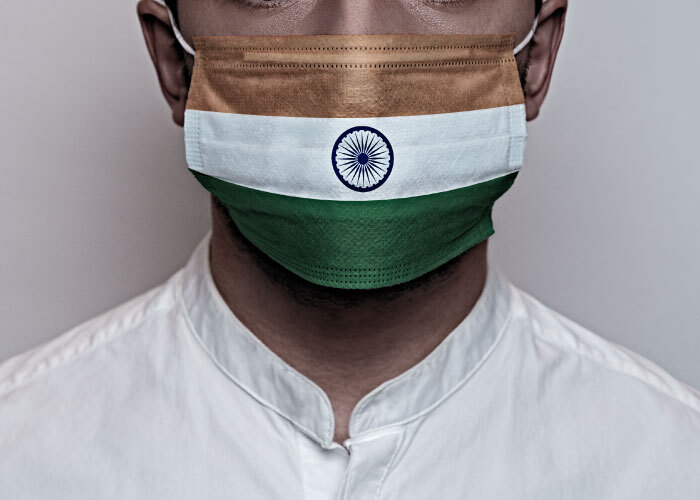The second wave of Covid-19 has left almost each one of us speechless. We all are deeply startled by the severity of cases. Nonetheless, we all can witness a rampant increase in the number of fungal infections being reported, mostly coming from the people who have recovered from coronavirus. But, many of us are not aware of what exactly it is. Fret not; know everything you should be mindful of, in terms of black fungus here.
What is black fungus?
Mucormycosis, also known as black fungus, is a sporadic infection. Exposure to Mucormycosis usually happens by mucor mold found in soil manure, plants, and rotting fruits and vegetables. One can also observe it in the mucus of the nose of healthy people, attacking the sinuses, the brain and the lungs and can be life-threatening in diabetic or critically immunocompromised people, such as people suffering from cancer or infections like HIV/AIDS.
Is Black Fungus something that Covid brings along itself?
The medical community is already familiar with this infection. Medical students always knew that black fungus infects diabetic people – the ones with uncontrolled diabetes. The blend of uncontrolled diabetes and other diseases may lead to black fungus. Even prolonged stay in the ICU is seen to have increased the risk of black fungus (1).
As the cases of blacks fungus increase, so do concerns all across the nation. AIIMS Director Randeep Guleria explained that this particular fungal infection is not novel, but it’s cases have been raised with COVID-19. He also mentioned that the leading cause of black fungus is the popping of steroids.
Can people without Covid get black fungus?
Healthy people shouldn’t bother about black fungus, except those with high blood sugar levels. Being alert and know that they are are at a higher risk of getting the infection, even if they don’t have Covid.
Signs and treatment of black fungus
Black fungal infection is mainly affecting people recovering from COVID-19. The infection is discoloration or blackening over the nose, double or blurred vision, pain in the chest, difficulties in breathing and coughing blood. Mucormycosis predominantly affects the sinuses and the eye. In addition, sometimes, it can reach the brain and cause nasal problems. There have been few reports of pulmonary mucormycosis.
What is white fungus?
The white fungus attacks people who have weak immunity. Unsanitary conditions containing the moulds make individuals likely to catch this fungal infection. If you inhale these, it can infect the other person, although the disease is not contagious. Even diabetics, people who have cancer, and those on long steroids treatment are at high risk of getting the white fungus. White fungus can impact the brain, respiratory organs, digestive tract, kidneys, nailbed or even private parts.
Signs and treatment of white fungus
Victims of white fungus infection display symptoms that are similar to COVID-19. The four cases reported in a hospital in Patna revealed that COVID-related symptoms were shown, but they didn’t test positive for COVID. In every case, the patient’s lungs were seen to be infected. The signs can also be similar to the black fungus.
As the white fungus attacks the lungs and chest, it can lead to cough, breathlessness and chest pain. The infection may have inflammatory symptoms, which causes swelling, infections, headaches and pains.
One can detect the infection through X-rays and CT scans, and the patients can be treated with antifungal medications. In Patna cases, after giving antifungal drugs, doctors saw the sufferers improving and recovering. (2)
What is the yellow fungus?
Doctors have suggested that a yellow fungus can be substantially more critical than the black and white fungus infection. It demands attention from the very start because it is an infection that can create heavy internal damage.
Like the other fungal infections, a yellow fungus infection tends to spread via infected environments, or a suspected patient breathes moulds that grow in the atmosphere. While black fungus infection has been declared an epidemic in some states, yellow fungus infection isn’t new. Considering the harm caused by the disease is relatively more severe, specialists now warn people to start recognizing the illness from day 01 and seek help. (3)
Symptoms of the yellow fungal infection
As per the case studies available, the following are the comprehensive symptoms of yellow fungus infection include Slow metabolism, unexplained weight loss, disturbed digestion, pus leakage. In addition, scrawny or sunken eyes, loss of appetite, malnutrition, lack of energy, fatigue, slowed healing of wounds, Necrosis (in severe cases) or Prolonging recovery timelines.
Takeaway about the fungal infections
The fungal infections are different from each other by the manner of their spread. While black fungus starts with distinct facial disfiguration. The yellow fungus infection starts to cause symptoms by launching an attack on the body’s internal organ and disturbing vital bodily processes.
